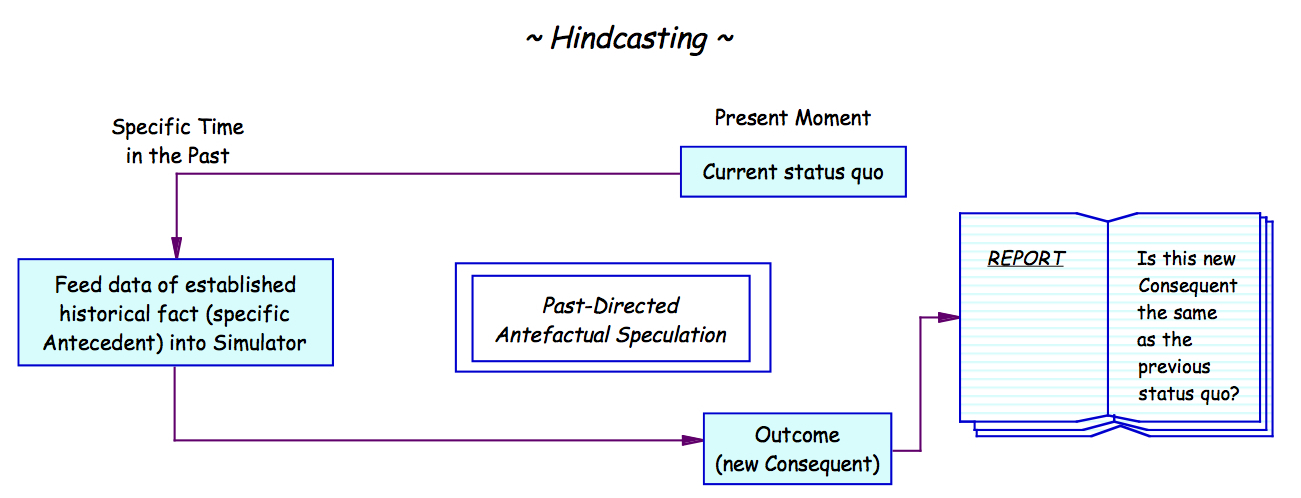|
Stock Market Cycles
Stock market cycles are proposed patterns that proponents argue may exist in stock markets. Many such cycles have been proposed, such as tying stock market changes to political leadership, or fluctuations in commodity prices. Some stock market designs are universally recognized (e.g., rotations between the dominance of value investing or growth stocks). However, many academics and professional investors are skeptical of any theory claiming to identify or predict stock market cycles precisely. Some sources argue identifying any such patterns as a "cycle" is a misnomer, because of their non-cyclical nature. Economists using efficient-market hypothesis say that asset prices reflect all available information meaning that it is impossible to systematically beat the market by taking advantage of such cycles. Changes in stock returns are primarily determined by external factors such as the U.S. monetary policy, the economy, inflation, exchange rates, and socioeconomic conditions (e.g ... [...More Info...] [...Related Items...] OR: [Wikipedia] [Google] [Baidu] |
Stock Markets
A stock market, equity market, or share market is the aggregation of buyers and sellers of stocks (also called shares), which represent ownership claims on businesses; these may include ''securities'' listed on a public stock exchange as well as stock that is only traded privately, such as shares of private companies that are sold to investors through equity crowdfunding platforms. Investments are usually made with an investment strategy in mind. Size of the market The total market capitalization of all publicly traded stocks worldwide rose from US$2.5 trillion in 1980 to US$111 trillion by the end of 2023. , there are 60 stock exchanges in the world. Of these, there are 16 exchanges with a market capitalization of $1 trillion or more, and they account for 87% of global market capitalization. Apart from the Australian Securities Exchange, these 16 exchanges are all in North America, Europe, or Asia. By country, the largest stock markets as of January 2022 are in the U ... [...More Info...] [...Related Items...] OR: [Wikipedia] [Google] [Baidu] |
Business Cycle
Business cycles are intervals of general expansion followed by recession in economic performance. The changes in economic activity that characterize business cycles have important implications for the welfare of the general population, government institutions, and private sector firms. There are many definitions of a business cycle. The simplest defines recessions as two consecutive quarters of negative GDP growth. More satisfactory classifications are provided by, first including more economic indicators and second by looking for more data patterns than the two quarter definition. In the United States, the National Bureau of Economic Research oversees a Business Cycle Dating Committee that defines a recession as "a significant decline in economic activity spread across the market, lasting more than a few months, normally visible in real GDP, real income, employment, industrial production, and wholesale-retail sales." Business cycles are usually thought of as medium-term ev ... [...More Info...] [...Related Items...] OR: [Wikipedia] [Google] [Baidu] |
Trend Following
Trend following or trend trading is a trading strategy according to which one should buy an asset when its price trend goes up, and sell when its trend goes down, expecting price movements to continue. There are a number of different techniques, calculations and time-frames that may be used to determine the general direction of the market to generate a trade signal, including the current market price calculation, moving averages and channel breakouts. Traders who employ this strategy do not aim to forecast or predict specific price levels; they simply jump on the trend and ride it. Due to the different techniques and time frames employed by trend followers to identify trends, trend followers as a group are not always strongly correlated to one another. Trend following is used by commodity trading advisors (CTAs) as the predominant strategy of technical traders. Research done by Galen Burghardt has shown that between 2000-2009 there was a very high correlation (.97) between tr ... [...More Info...] [...Related Items...] OR: [Wikipedia] [Google] [Baidu] |
Market Trends
A market trend is a perceived tendency of the financial markets to move in a particular direction over time. Analysts classify these trends as ''secular'' for long time-frames, ''primary'' for medium time-frames, and ''secondary'' for short time-frames. Traders attempt to identify market trends using technical analysis, a framework which characterizes market trends as predictable price tendencies within the market when price reaches support and resistance levels, varying over time. A future market trend can only be determined in hindsight, since at any time prices in the future are not known. This fact makes market timing inherently a game of educated guessing rather than a certainty. Past trends are identified by drawing lines, known as trendlines, that connect price action making higher highs and higher lows for an uptrend, or lower lows and lower highs for a downtrend. Market terminology The terms "bull market" and "bear market" describe upward and downward market tren ... [...More Info...] [...Related Items...] OR: [Wikipedia] [Google] [Baidu] |
Bottom (technical Analysis)
A chart pattern or price pattern is a pattern within a chart when prices are graphed. In stock and commodity markets trading, chart pattern studies play a large role during technical analysis. When data is plotted there is usually a pattern which naturally occurs and repeats over a period. Chart patterns are used as either reversal or continuation signals. Traditional chart pattern Included in this type are the most common patterns which have been introduced to chartists for more than a hundred years. Below is a list of the most commonly used traditional chart patterns: Reversal Patterns: # Double Top Reversal # Double Bottom Reversal # Triple Top Reversal # Triple Bottom Reversal # Head and Shoulders # Key Reversal Bar Continuation patterns: # Triangle # Flag and Pennant # Channel # Cup with Handle Harmonic pattern Harmonic Pattern utilizes the recognition of specific structures that possess distinct and consecutive Fibonacci ratio alignments that quantify and validate ... [...More Info...] [...Related Items...] OR: [Wikipedia] [Google] [Baidu] |
Market Timing
Market timing is the strategy of making buying or selling decisions of financial assets (often stocks) by attempting to predict future market price movements (market trends). The prediction may be based on an outlook of market or economic conditions resulting from technical or fundamental analysis. This is an investment strategy based on the outlook for an aggregate market rather than for a particular financial asset. The efficient-market hypothesis is an assumption that asset prices reflect all available information, meaning that it is theoretically impossible to systematically "beat the market." Approaches Market timing can cause poor performance. After fees, the average "trend follower" does not show skills or abilities compared to benchmarks. "Trend Tracker" reported returns are distorted by survivor bias, selection bias, and fill bias. At the Federal Reserve Bank of St. Louis, YiLi Chien, Senior Economist wrote about return-chasing behavior. The average equity mutual fund ... [...More Info...] [...Related Items...] OR: [Wikipedia] [Google] [Baidu] |
Technical Analysis
In finance, technical analysis is an analysis methodology for analysing and forecasting the direction of prices through the study of past market data, primarily price and volume. As a type of active management, it stands in contradiction to much of modern portfolio theory. The efficacy of technical analysis is disputed by the efficient-market hypothesis, which states that stock market prices are essentially unpredictable, and research on whether technical analysis offers any benefit has produced mixed results.Osler, Karen (July 2000). "Support for Resistance: Technical Analysis and Intraday Exchange Rates," FRBNY Economic Policy Reviewabstract and paper here. It is distinguished from fundamental analysis, which considers a company's financial statements, health, and the overall state of the market and economy. History The principles of technical analysis are derived from hundreds of years of financial market data. Some aspects of technical analysis began to appear in Amste ... [...More Info...] [...Related Items...] OR: [Wikipedia] [Google] [Baidu] |
Yield Curve
In finance, the yield curve is a graph which depicts how the Yield to maturity, yields on debt instruments – such as bonds – vary as a function of their years remaining to Maturity (finance), maturity. Typically, the graph's horizontal or x-axis is a time line of months or years remaining to maturity, with the shortest maturity on the left and progressively longer time periods on the right. The vertical or y-axis depicts the annualized yield to maturity. Those who issue and trade in forms of debt, such as loans and bonds, use yield curves to determine their value. Shifts in the shape and slope of the yield curve are thought to be related to investor expectations for the economy and interest rates. Ronald Melicher and Merle Welshans have identified several characteristics of a properly constructed yield curve. It should be based on a set of securities which have differing lengths of time to maturity, and all yields should be calculated as of the same point in time. Al ... [...More Info...] [...Related Items...] OR: [Wikipedia] [Google] [Baidu] |
National Bureau Of Economic Research
The National Bureau of Economic Research (NBER) is an American private nonprofit research organization "committed to undertaking and disseminating unbiased economic research among public policymakers, business professionals, and the academic community." The NBER is known for proposing start and end dates for recessions in the United States. Many chairpersons of the Council of Economic Advisers were previously NBER research associates, including the former NBER president and Harvard professor Martin Feldstein. The NBER's current president and CEO is James M. Poterba of MIT. History Founding The NBER was established in 1920 following debates during the Progressive era over income distribution. Founded by Malcolm Rorty and Nachum Stone, the NBER aimed to fill the information gap on economic data. The organization's research is restricted to presenting data and findings without making policy recommendations. Early years The NBER initially received support from the Carnegie F ... [...More Info...] [...Related Items...] OR: [Wikipedia] [Google] [Baidu] |
Business Cycle Models
Business is the practice of making one's living or making money by producing or buying and selling products (such as goods and services). It is also "any activity or enterprise entered into for profit." A business entity is not necessarily separate from the owner and the creditors can hold the owner liable for debts the business has acquired except for limited liability company. The taxation system for businesses is different from that of the corporates. A business structure does not allow for corporate tax rates. The proprietor is personally taxed on all income from the business. A distinction is made in law and public offices between the term business and a company (such as a corporation or cooperative). Colloquially, the terms are used interchangeably. Corporations are distinct from sole proprietors and partnerships. Corporations are separate and unique legal entities from their shareholders; as such they provide limited liability for their owners and members. Corpora ... [...More Info...] [...Related Items...] OR: [Wikipedia] [Google] [Baidu] |
Macroeconomic Model
A macroeconomic model is an analytical tool designed to describe the operation of the problems of economy of a country or a region. These models are usually designed to examine the comparative statics and dynamics of aggregate quantities such as the total amount of goods and services produced, total income earned, the level of employment of productive resources, and the level of prices. Macroeconomic models may be logical, mathematical, and/or computational; the different types of macroeconomic models serve different purposes and have different advantages and disadvantages. Macroeconomic models may be used to clarify and illustrate basic theoretical principles; they may be used to test, compare, and quantify different macroeconomic theories; they may be used to produce "what if" scenarios (usually to predict the effects of changes in monetary, fiscal, or other macroeconomic policies); and they may be used to generate economic forecasts. Thus, macroeconomic models are widely ... [...More Info...] [...Related Items...] OR: [Wikipedia] [Google] [Baidu] |





